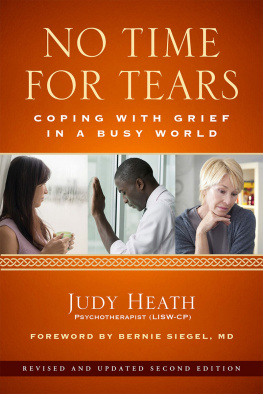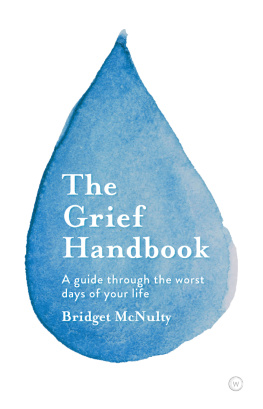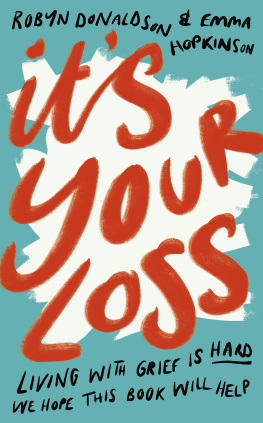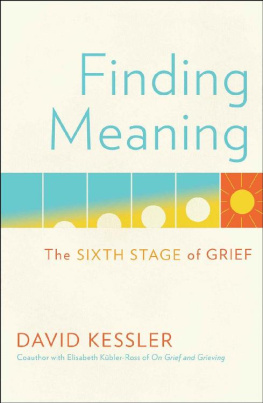Table of Contents
ALSO BY GEORGE A. BONANNO
Emotions
For Maria Bonanno, my mother, my friend, and my hero.
Authors Note
With the exception of Sondra Singer Beaulieu, the names and personal details of the people described in this book have been changed to protect confidentiality.
CHAPTER 1
The Worst Thing That Could Ever Happen
Heather Lindquist was in the kitchen cleaning up after lunch when she heard a dull thud. It sounded as if it came from the hallway, and it was just a little too loud to ignore. Boys! she yelled. What are you up to? There was no answer. She found her two boys playing quietly on the couch in the living room. They giggled. You jokers, she said with a smile. What was that sound? They shrugged. Where is your father? Without waiting for an answer, she ran toward the hallway. She cried out in fear when she found her husband, John, writhing on the floor. John had severe asthma. He was taking a new medication, and it had seemed to be working, but suddenly he had collapsed in the worst attack hed ever had. Heather tried everything she could think of to save her husbands life. Then she called an ambulance. The rest was a blur. John died of cardiac arrest on the way to the hospital.
Heather was thirty-four years old. Her boys were five and seven. At that moment, Johns death felt like the worst thing that could ever have happened to her.
Most of us are so fearful of harm coming to those we love that we find it difficult even to think about. With time, though, we have no choice. Surveys on stressful life events put the death of a loved one right at the top of the list. We imagine grief to be a relentless shadow that can lock onto us and follow us everywhere. Grief, as we imagine it, turns light into dark and steals the joy out of everything it touches. It is overwhelming and unremitting.
Grief is undeniably difficult. But is it really always overwhelming?
Heather Lindquist had lived her entire life in the same quiet suburban community in northern New Jersey. She and John had been high school sweethearts They married and purchased a small ranch-style house. They had children. They got a dog. The schools were good and the community was stable. Heather thought that the television was on more than it should be, but other than that, everything seemed in order.
Then John died and she had to rethink it all.
Now she was a single parent. She had to find new ways to earn money and also find extra time to be with her boys. And somehow she had to contain everyones anguish. She found strength she didnt know she had. It was lonely and painful at times. But Heather found meaning and vigor and even joy in the idea that she was going to make it.
I expected to collapse. I really did. Thats what I wanted to do. That would have been the easiest thing to do, Heather explained. But... I couldnt. Each day I got up and did what I had to. The days passed and somehow it was OK. The boys were great. They were upset in the beginning, of course. We all were. They hung in there. And we stayed together. I love those boys so much. John would have been proud of them.
Heathers story illustrates a curious irony in the way we think about grief and mourning. We cant help but know that the pain of loss is inevitable. Death and taxes, as the saying goes. Eventually, grief confronts everyone, and probably more than once in a lifetime. Yet, despite its ubiquity, most people know next to nothing about what to expect. Even people who have already suffered a major loss often do not know whether the grief they experienced was normal or whether they will experience anything remotely similar if they have to go through it again.
The questions we might ask are endless: What does it really mean to lose someone? Does grief feel the same each time? Is it the same for everyone? Is it always dominated by pain and anguish? How long does it last? How long should it last? What if someone doesnt appear to grieve enough? What if someone talks about having an ongoing connection to the person who died? Is that normal? These are big and important questions. If we understand the different ways people react to loss, we understand something about what it means to be human, something about the way we experience life and death, love and meaning, sadness and joy.
There is no shortage of books on grief and bereavement. Most take a surprisingly narrow perspective, avoiding the bigger questions. One reason is that many of the books on grief are written by medical practitioners or therapists. This is not surprising, but it does create a bit of a problem when we try to understand grief in broader terms. Grief therapists are apt to see only those bereaved people whose lives have already been consumed by suffering, people for whom professional help is the only chance of survival. These human dramas may be compelling, but they do not tell us much about what grief is like for most people.
Self-help books tend toward the same end of the spectrum. They portray grief as a paralyzing sadness, an anguish that removes us from the normal path of life and makes it difficult to function as we once did. The bereaved, in these books, can hope only to gradually wrench themselves from half-conscious despair. Self-help books embody this dramatic representation in titles like Returning to Life or Awakening from Grief.
Overwhelming grief experiences are not trivial, to be sure, especially for the people who suffer them. But they are not the experiences most people have when they lose a loved one. While researching bereavement, my colleagues and I have interviewed hundreds of people. As part of our research, we ask people to explain their personal story, how they have experienced loss and what their grief was like. Many who volunteer for our studies make the point that they tried to read up on bereavement. They quickly add, however, that they couldnt seem to find anything in their reading that matched their own experience. They often tell us, in fact, that they wanted to participate in our research just to have the chance to show the so-called experts what grief looks like on the inside.

Not long after obtaining my PhD in clinical psychology in 1991, I received a curious job offer: a chance to direct a research study on grieving at the University of California in San Francisco. I say it was curious because at the time I knew almost nothing about bereavement, either professionally or personally. I had experienced only one major loss: My father had died a few years earlier, and I had explored our relationship as part of my training to become a therapist. But since then, I hadnt given much thought to my own grief reactions. I confess that I found the idea of studying bereavement a bit unsettling. I wondered if it might be too depressing a topic to study. I wondered if I might become depressed.
Delving into books and papers on grief, however, quickly piqued my interest. Although bereavement is part of the fabric of life, something almost everyone must deal with, it had received surprisingly little systematic study or attention.
At the time I got interested, though, that lack of attention was just beginning to change.













